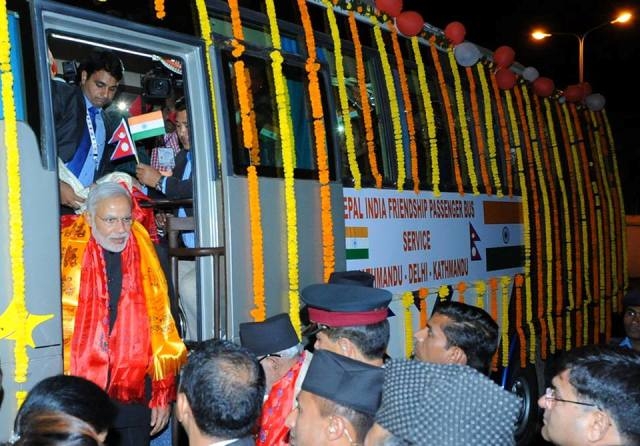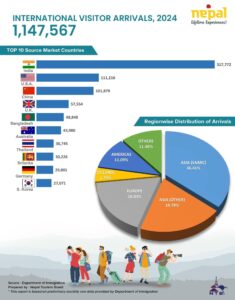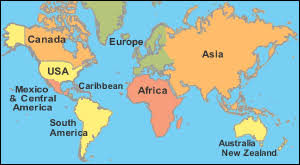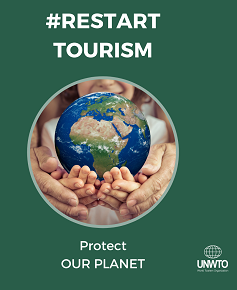Nepal – India sign 10 agreements including tourism promotion

TBN Report —–
Kathmandu: Nepal and India signed 10 agreements including operation of bus service between Kathmandu – New Delhi and tourism promotion between the two countries.
Indian Prime Minister Narendra Modi flagged off Kathmandu-Delhi Passenger Bus Service ‘Pashupatinath Express’ and signed more than 10 agreements with Nepal on Tuesday.
The Presidents and Prime Ministers South Asian countries – Afghanistan, Bangladesh, Bhutan, India, Maldives, Pakistan and Sri Lanka are here to participate in 18th summit of SAARC to be held on November 26-27, 2014.
Prime Minister Modi , addressing the inaugural and handover ceremony of the National Trauma Centre in Kathmandu ,urged Nepal’s political parties to draft the Constitution by early next year as committed through consensus, which will reflect aspirations of all communities, including Madhesis, Pahadis and Maoists .
The India-Nepal Bilateral Motor Vehicle Agreement for Passenger Traffic envisages regular bus services between the two countries as per agreed routes, trips and time-table. It simplifies the procedure for movement of private and non-regular vehicles across the India-Nepal border.This agreement would facilitate seamless and hassle-free movement of people of both countries, further enhancing people to people contact and also promoting tourism.
Initially, bus services will commence on the three routes :(i) Kathmandu-Bhairhawa-Sunauli-Gorakhpur-Lucknow-New Delhi; (ii) Kathmandu-Bhairhawa-Sunauli-Azamgarh-Varanasi; and (iii) Pokhara-Bhairhawa-Sunauli-Gorakhpur-Lucknow- New Delhi.
According to the agreement , the objective is to operate the bus service on either daily or on alternate day basis ,once all the necessary modalities are in place.
Similarly, both India and Nepal seek to enhance cooperation in the tourism and hospitality sector. MOU on Tourism between the GOI and GON on Cooperation in the field of Tourism provides, inter alia, for-
• promoting cooperation and direct communication between the stakeholders of tourism and hospitality industry
• exchanging information and data related to tourism
• encouraging cooperation between tourism stakeholders
• exchanging experience in the areas of promotion, marketing, etc.
• constituting a Joint Working Group
‘ India and Nepal being neighbours can benefit from better cooperation in the tourism sector. Footfall of tourists in both the counties is on the rise. Both the countries offer many tourist attractions which can be complementary. Joint efforts should be made to tap the full potential of opportunities available in the sector. Besides holiday, adventure and mountaineering tourism, immense scope exists in developing spiritual tourist circuits, such as the Buddhist Circuit (Lumbini-Bodh Gaya-Sarnath-Kushinagar). Establishment of a JWG after signing of the MOU will help in addressing and implementing the above packages. ‘
Currently, India is the largest source of tourists coming to Nepal with 1,65,815 Indian tourists visiting the country in 2012. Total tourist inflows into Nepal in 2012 was 803,092 which amounts to nearly 40% of tourist flows into Nepal.
MoU on Twinning arrangements between Kathmandu-Varanasi, Janakpur-Ayodhya and Lumbini-Bodh Gaya as sister cities is also signed between the two countries.
Janakpur-Ayodhya, Lumbini-Bodh Gaya and Kathmandu-Varanasi are proposed to be linked as sister cities owing to their deep cultural and historical linkages.
Kathmandu, where the Pashupatinath temple is located could become the sister-city of Varanasi, where Kashi Vishwanath temple is located.
Varanasi is often referred to as “the holy city of India”. Varanasi is also known as the favourite city of the Hindu deity Lord Shiva as it has been mentioned in the Rigveda that this city in older times was known as Kashi or “Shiv Ki Nagri”. One of the largest residential universities of Asia, the Banaras Hindu University (BHU), is located there whereas, Nepal’s most sacred Hindu shrine and one of the greatest Shiva sites, Pashupatinath temple is located in Kathmandu. The people of Kathmandu and Nepal have had religious, cultural and educational ties with Varanasi since ancient times. Many eminent Nepalese are alumni of BHU.
Ayodhya, the birth place of Lord Ram is perfect to be a sister-city with Janakpur, which is famous as the birth place of Sita as per the Hindu epic Ramayan and where the famous Ram-Janaki temple is located. Every five years a procession (Barat) from Ayodhya comes to Janakpur.
Lumbini, the birth place of Lord Budha could be a sister-city of Bodh Gaya, where Budhha is said to have attained enlightenment.
The sister-city relations among these cities will help in promoting cultural exchange, sharing of knowledge and expertise as well as develop stronger people-to-people relations among them.
The other Memorandum of Understanding (MOU) include – MOU on National Police Academy, Panauti ; Line of Credit of US$ 1 Billion to Government of Nepal from EXIM Bank ; MoU for Cooperation in Traditional Systems of Medicine ; MoU between India and Nepal on Cooperation for Youth Affairs ; Signing of PDA for the 900 MW Arun-III Hydropower project by SJVN and GoN; Emergency and Trauma ;. Supply of one Dhruv Advanced Light Helicopter (ALH) Mark III to the Nepal Army ; Gifting of a sapling from the Bodhi Tree at the Mahabodhi temple in Bodh Gaya ; Circulation of 500 and 1000 denomination Indian currency in Nepal ; Gifting of one mobile soil testing van/lab and Augmentation of power supply to Nepal by 70 MW.
November 25, 2014














